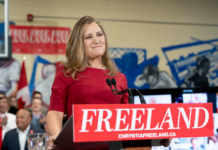The Canada Mortgage and Housing Corporation (CMHC) has released this year’s annual rental market report and notes that in part migration continues to drive higher demand for rental space.
Economists with the Crown corporation blamed growth in demand outpacing housing supply – driven by “significantly higher net migration.” In 2022, Canada’s vacancy rate fell to an over 20-year low.
“Growth in demand outpaced strong growth in supply, pushing the vacancy rate for purpose-built rental apartments down from 3.1% to 1.9%. This was the vacancy rate’s lowest level since 2001. Rent growth, for its part, reached a new high,” wrote CMHC economists.
“Growth in rental demand across the country reflected significantly higher net migration, as flows continued to benefit from relaxed COVID-related travel restrictions.”
Costs of homeownership was also a major driver, forcing many people to resort to renting “mortgage increases and relatively high prices, which increased the costs of transitioning to homeownership.”
British Columbia continues to top the list when it comes to unaffordability.
Cities in BC made up the bulk of the top five most expensive places to rent. Renting a two-bedroom unit in Vancouver costs residents a whopping $2,002 on average.
Toronto was the second most expensive city with rents for similar units costing $1,779, followed by Victoria where renters pay an average of $1,699.
Kelown ranked in fourth place with rents averaging $1,690, whereas in Ottawa it costs $1,625 to rent a two-bedroom unit.
The Liberal government recently introduced a plan to welcome 500,000 new immigrants to Canada annually by 2025.
A recent poll shows that excessive strain on Canada’s housing availability and healthcare system are on top of mind for Canadians when it comes to high immigration numbers.
The Leger survey found that 49% of Canadians said that Ottawa’s plan was too ambitious at the present time.






















